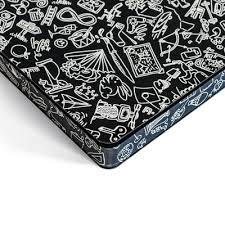The confusion begins with the question what one calls what many of us do: make sketchnotes. Bulletjournaling*? Draw in your diary? Scribble lists? Make every day a bit prettier? One person calls it that, the next one calls it this – everyone has in common that they enjoy bringing things into books. And it goes something like this:
One beginning is a diary.
Almost everyone of us started it sometime between the ages of 14 and 20 – we were young and we needed to vent. And nobody except us got to see it. Here it was (and is) no matter whether it has personal notes or only the schedule for the next day, whether it is nicely formulated or just in in short notes, whether the writing (and perhaps the drawings) deserve an exhibition or not: Diaries address only those who write them and everyone decides for themselves how public they are. By the way, some of us continue but that’s not the topic of this blog. Exactly. It’s private.

Chinese silk: Popular in the 70s.
Another beginning: The day planner.
It is, despite all the handy apps, still available on paper. For those in a hurry, the seven days of a week are on a double page with clear lines and space for important meetings and/or – at least as important – short shopping notes. Anyone who has to remember more, takes a page for every day, there are plenty of practical calendars, casebound or as a pre-punched stack of pages for the whole year which then go in a calendar folder of all price ranges.

So much to plan: This contribution e.g. is too late …
Yet another beginning: the loose pages and on the go notes.
Oops! Someone just said something very important in this meeting – and you only have a few slips and a pen. But they are already partly full of the little drawings you always make at such gatherings. Most of what is said is rather lullaby, especially because it is also projected onto the wall via PowerPoint. You just draw away … The clever sentence of the meeting gets a speech bubble or a few roses – that’s up to your taste. Then the meeting’s over and you think: “Where do I put this now?” Or: “Actually don’t throw this out. It looks so beautiful.”

Parent-teacher conferences can get entertaining this way.

Even a spreadsheet can be exciting.
The ideal beginning: The idea of keeping a book.
Beautify your appointments. Sketch what comes to mind about important content of meetings. Decorate the date, make important things colorful or bold or big. Add unicorns or caricature your opponent. Draw hearts as dots for the letter “i” or musical scores on the pre-printed lines. You decide what’s important to you. And if it matters to you keep it in a book that gives you plenty of space for everything. You’ll see: it becomes more beautiful, special and personal with every page you fill. It will be: your book.

How do you like it the best?
Finally, some advertising: Our suggestion.
Whatever you want to put on paper, it’s more fun when you have the right material. Our BulletProof is wrapped in smooth recycled leather and printed with everything we can think of about “life, the universe and all the rest”.



Because it is thread-stitched it opens perfectly. And on the 120 gr paper won’t show marker lines on the back of the paper. As an orientation for those who like to draw straight lines and tables, it is printed with fine gray dotted lines. In short, we already think it’s pretty nice. Make it even more beautiful. Just start.
(*Incidentally, the name Bullet Journal is an invention of the New York designer Ryder Carroll, who was looking for a system with which he could plan appointments and events – and the whole thing neatly, but not slavishly to a grid. He wanted to set his bullet points as individually as possible, and so he developed the idea of using dots for tasks, hyphen for notes, and circles for meetings. Completed tasks he marked with an X, unfulfilled ones he moved to the next day with > and made a note again. For orientation he used the dotted lines which you also find on the pages of our BulletProof.
These simple principles ensure structure. It will be beautiful through you, your handwriting, your colors, your drawings. Just try it and make the Bulletproof yours.)




